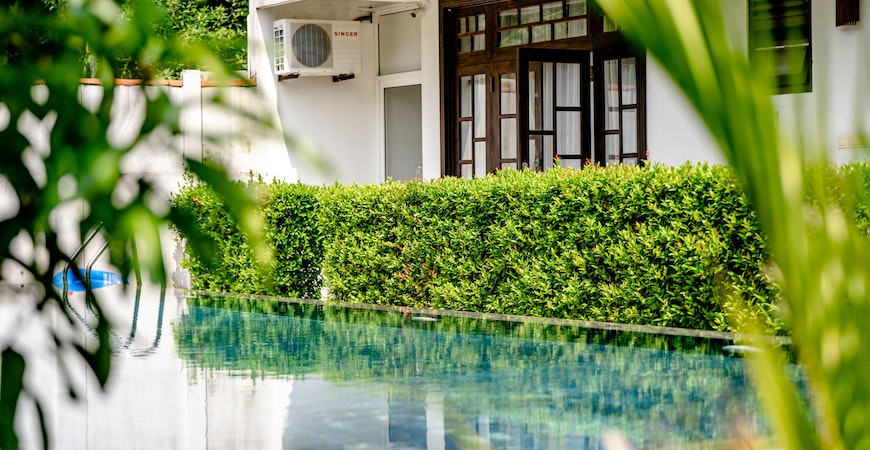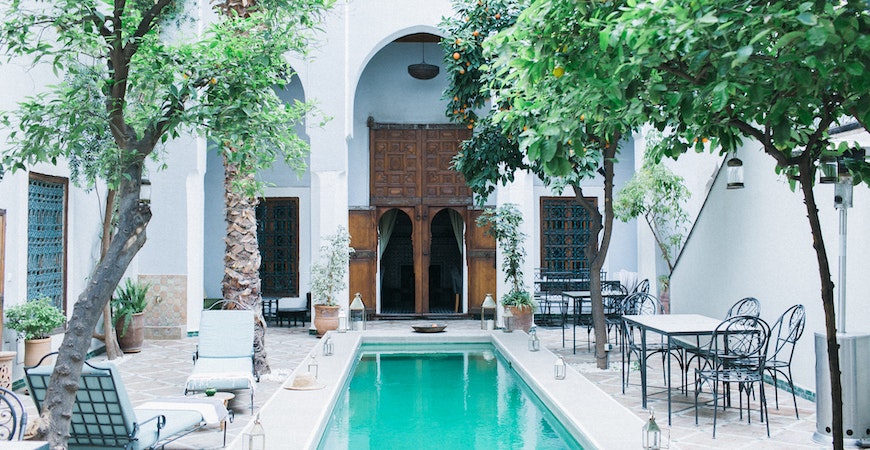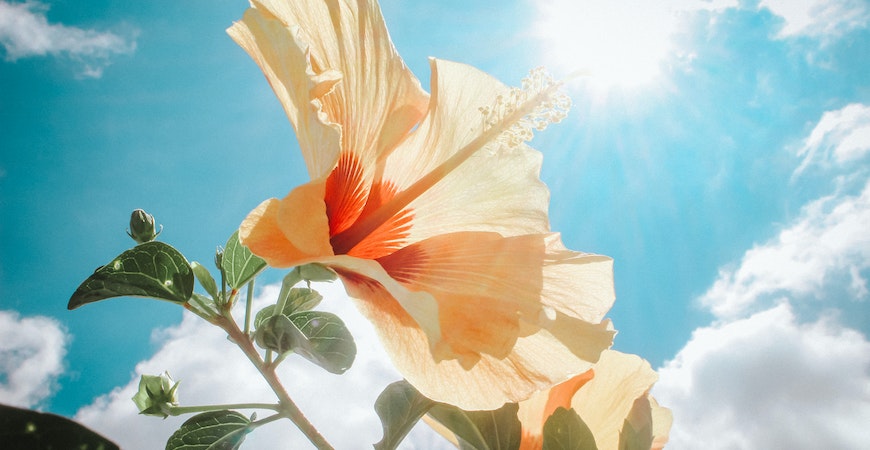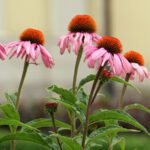
Best Plants to Grow Around a Pool
Lounging poolside is one of the best ways to spend your summer. However, you can make the experience even better by placing plants around your pool.
Whether you’re looking for a practical addition or a bold new look, poolside plants, and flowers can help. So, as you’re getting your backyard paradise ready for summer, don’t forget about the plants!
Why You Should Grow Plants Around Your Pool
There are a few of the best reasons why you should consider growing plants around your pool:
- Add color or texture to your poolside aesthetic
- Keep pests away
- Add shade and protect yourself from the sun on scorching summer days
- Improve privacy in and around your pool
Now, of course, there are a variety of non-plant ways to gain these benefits. However, down that path lies lots of money, time, and energy as you try to find pieces that match each other and your aesthetics.
However, when you tackle potential poolside issues with plants, you’re reaping these benefits naturally. You’re turning what could look like a garden-variety outdoor furniture store into a literal garden.
While there are some common pitfalls to avoid — plants with falling leaves may dirty your pool, or high-maintenance foliage may make you long for the days when you could lounge instead — using plants to improve your pool and backyard can be fun and relatively inexpensive.
Keep Pests Away With Potted Plants Around Your Pool
If there’s anything that can ruin a day at the pool, it’s pests. Mosquitoes, dragonflies, and other insects are often attracted to humid environments and standing water.
Instead of dealing with chemical sprays or artificial-smelling candles, keep pests away the natural way with bug-repelling plants:
- Ageratum
- Basil
- Citronella
- Lavender
- Marigold
- Nasturtiums
- Ornamental Onion
- Petunias
- Rosemary
- Texas Hummingbird Mint
In addition to their natural pest barriers, many of these plants also attract pollinators. That means you’re keeping the bad bugs away while inviting beneficial creatures that help your whole garden thrive.
You may also notice that many of the plants listed here give off potent scents. It’s the essential oils behind these scents that repulse pests.
That said, not every fragrant flower wards off bugs. Also, some floral options are effective but perhaps not as appealing to sniff as your nursing a frozen drink — garlic being one such example.
The essential oils in these plants may also provide a more direct repellent. Smashing their leaves and applying the essential oil directly to your skin may form a scent barrier pests dare not cross. (That said, if you have sensitive skin or allergies, you may want to avoid this natural repellent.)
Best Plants Around Your Pool for Shade
It’s always nice to soak up the sun, but there are times when you’d rather sit in the shade than absorb any more solar rays. Instead of unfurling an oversized umbrella every time you want a break from the heat, try planting shady plants and trees near your pool.
Evergreens and hedges, for example, can block the sun, provide privacy, and be easy to maintain. You can also shape them into almost anything to give your backyard the exact aesthetic you’re looking for.
Another shady option is fruit trees. Dwarf-sized citrus trees, specifically, can offer a physical barrier to the sun and a bounty of fresh fruit for snacking or cocktails.
If you’re skeptical about the work involved with starting a micro-orchard in your backyard, start with a Meyer lemon tree. They are self-pollinating — so you only need a single tree to grow fruit — and they can go quickly in not much more than a standard 5-gallon bucket from your hardware store. (There are also more aesthetically pleasing choices for containers, too.)
Finally, if these shady selections don’t quite match the tropical vibe you’re going for, consider classic palm trees. They’re relatively easy to grow and maintain, and they’ll transform any backyard into something a little more beach-like.
Bold, Vibrant Looks for Your Poolside Garden
If your pool area is simply missing that one thing that turns it into something magical, planting bold, vibrant flowers may be just the thing you’re looking for.
For example, the tropical hibiscus comes in vivid pink, red, blood orange, and white varieties. While they prefer hot and humid climates, per their name, they can make do in northern climates if placed in full sun and brought in for overwintering when temperatures drop.
The bird of paradise is another plant that can leave your backyard feeling like a tropical resort. Their avian-like flowers with plumage-esque orange and purple leaves will have guests thinking they’ve snuck away to soak inside a rainforest pool.
Angel’s trumpets, with their dangling yet dazzling white flowers, add yet another lush touch to your pool area. However, if you have small kids or animals, you may want to avoid adding them next to a lounger due to their toxicity.
If you have low-nutrient soil, you may benefit from growing proteas. These stunning, texturally rich, and brightly colored plants can bring a distinct look to your backyard that will be hard to match otherwise.
Pool Plant Ideas for Arid Climates
Many of our suggestions for poolside plants are intended to bring a tropical look to your poolside. In most cases, you’ll need a steamy, if not sweltering, summertime environment for them to thrive.
For our friends who live in arid areas, though, there are still plenty of options to add a touch of greenery to your lounging space. Succulents, for instance, don’t require much moisture but are just as colorful and alluring as any other plant or flower we’ve mentioned.
Jade plants, and their fleshy leaves, don’t require high maintenance and can flourish with enough sun and well-draining soil. Some may view them solely as a houseplant, but they can eventually reach a height of six feet, making them a potential source of shade, too.
If you want something more shrub-life, echeverias only reach a height of two feet, but their green-purple leaves can add a dash of color to rock gardens and xeriscaped yards. They’re also drought-tolerant — though they need lots of sunlight to thrive.
Aenoiums produce woody, leggy stems and rosettes that range from deep red to playful pinks. If your summers produce semi-regular rain storms, you likely will never need to water them, but try to give them some shade in the afternoon to prevent damaged leaves. (A good rule of thumb: if the tips of the leaves start to turn white or brown, give them more time in the shade.)
Turn Your Poolside Into Something More Tropical With the Right Plants
Growing plants around your pool will provide a variety of benefits, from pest-free lounging to shade and privacy to the ultimate tropical vibe. If you’re looking to jazz up your backyard oasis, head to your garden center and get started with our favorite plants and flowers for around your pool.














